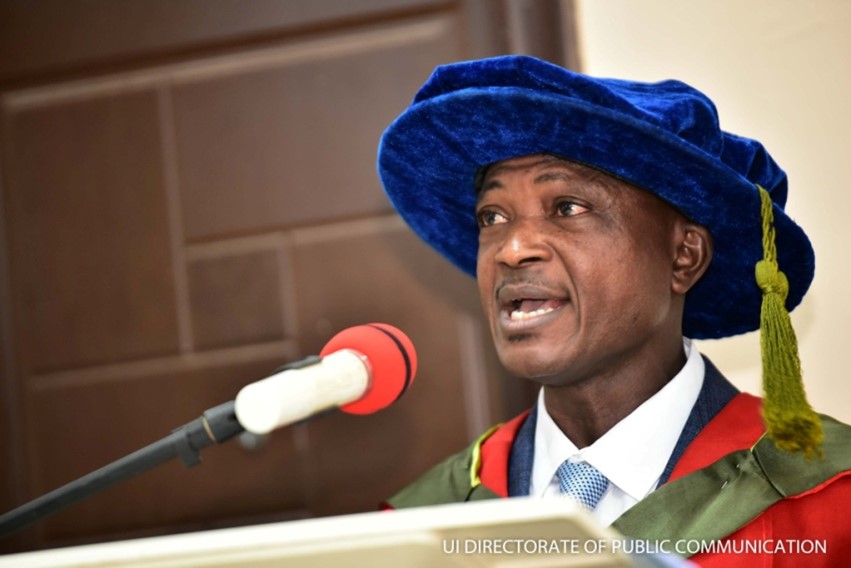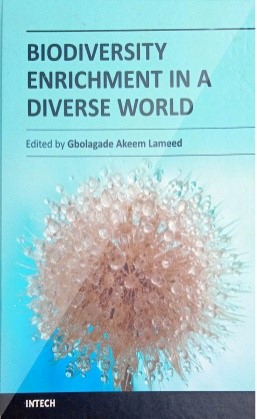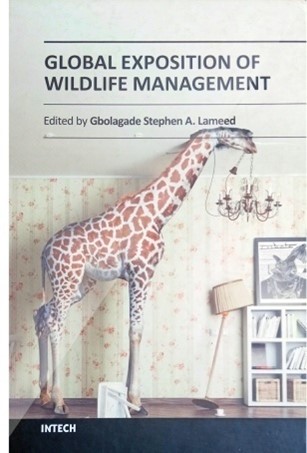Gbolagade Lameed (ELP 2014) | Professor, University of Ibadan, Nigeria
Lameed G.A. delivering Inaugural Lecture on 5 December 2019
I delivered an inaugural lecture on 5 December 2019, which reviews my contribution to knowledge and some conceptual framework in the field of wildlife and biodiversity management such as history of wildlife, overview of wildlife development in Nigeria, subsistence use of the environment and human carrying capacity, conflict between poachers and rangers, mammals of Nigeria and human pressure, economics of the sustainable wildlife population, economic analysis of wildlife resources, wildlife exploitation for marketing of products/services in Nigeria, wildlife as bio-indicator of the environment, biodiversity component and environmental impact assessment, and domestication of wildlife species. Wildlife management is both the art and science of managing pristine natural resources (fauna and flora) in their original form, on a sustained basis, to meet the current needs of human beings and as well fulfill future human requirements. Resource conservation goes beyond mere preservation and being kept untouched, but includes wise and rational utilisation, which is based on ecological principles that include agriculture, forestry, and other pastoral development.
The lecture also highlights my contributions to knowledge in wildlife management with my research focus centering on environmental impact assessment on wildlife, game ranching and domestication of species such as grasscutter (Thyonomyms swinderianus), African giant land snail (Archachatina marginata), guinea fowl (Numida meleagris) and honey/bee production, wildlife ecology and human-wildlife interactions. These research focuses have produced over eighty publications and four text books. Namely—Grasscutter/Cane rat Farming in the Tropics with 125 pages, Biodiversity Conservation and Utilisation in a Diverse World with 20 chapters and 284 pages, Biodiversity Enrichment in a Diverse World with 32 chapters and 545 pages and Global Exposition of Wildlife Management with 8 chapters and 90 pages. During my tenure as the substantive head of department from 2016 to 2020, other contributions to the growth of the system such as distinguished personality lectures which hosted a number of important personalities were highlighted, such as: Dr. Aminu Kano Mukthar, CEO and executive director of Nigerian Conservation Foundation (NCF); Prof. Mark Morgan from University of Missouri, Department of Parks Creation and Tourism, Colombia, Missouri; and Professor Pierluigi Bozzi from St. Joseph University, Madagascar.
The basic principles of the Earth Charter affirmed that humanity has the knowledge and technology to reduce impact on the environment. The plants and animals represent the accumulated history of millions of years of evolution. Each is the repository of the wealth of genetic novelties of unrealised potentials. Their lives’ processes and relationships are imperfectly known and have not yet yielded their quota to the environment of human understanding. Concern for the effective custody of this often unique and fragile wild species is the responsibility of the human society controlling the land upon which these species live. It is therefore imperative that human beings should be good custodians of the environment today, tomorrow and forever.
1. Biodiversity Conservation and Utilization in a Diverse World (Lameed, 2012) with twenty chapters and two hundred and eighty -four pages (fig. 21a)
2. Biodiversity Enrichment in a Diverse World (Lameed, 2012) with thirty two chapters and five hundred and forty five pages (fig. 21b)
3. Global Exposition of Wildlife Management (Lameed, 2017) with eight chapters and ninety pages (fig. 21c)
(a) (b) (c)
Fig 21: International Published/Edited Books from INTECH OPEN SCIENCE




